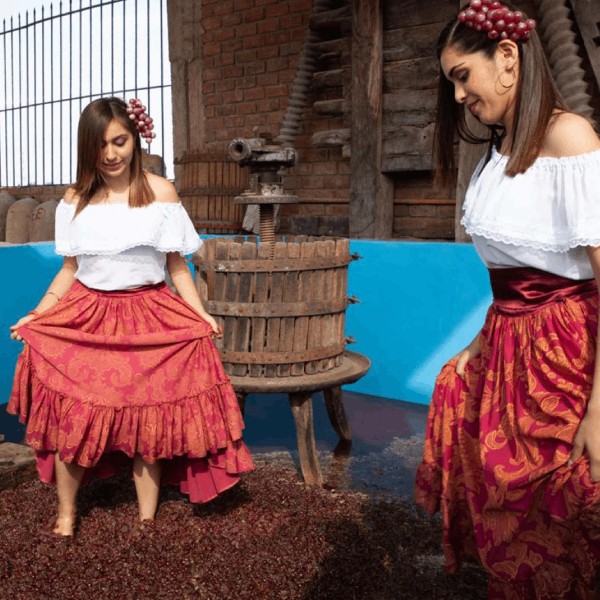 Location:
Location:
Huaraz is located in the Ancash region in northern Peru. Situated in the Santa River valley, about 400 kilometers north of Lima.
Climate:
The Weather in Huaraz is temperate and dry for most of the year. The months from April to October are considered the dry season, with sunny days and pleasant daytime temperatures ranging between 15°C and 25°C. During the rainy season, which extends from November to March, temperatures are milder, with highs around 20°C and lows around 10°C.
Altitude:
Huaraz is situated at an average altitude of approximately 3,052 meters above sea level. This elevation provides the city with a cool climate and a unique atmosphere.
Best time to visit:
The dry season, which usually runs from May to September, is the best time to visit Huaraz. During these months, the weather conditions are more stable, with clear skies and lower chances of rain. You can enjoy favorable weather for activities such as trekking, hiking, and visiting the lakes and glaciers of the region. Temperatures are usually pleasant during the day, with possible drops at night due to the altitude.
Huaraz, located in the Ancash region of Peru, is accessible both by land and air. Here are the main options for getting to Huaraz:
By land:
The most common way to reach Huaraz is from the city of Lima. From Lima, you can take an interprovincial bus to Huaraz. The bus journey takes approximately 8 to 10 hours, depending on traffic conditions and the choice of transport company. There are several bus companies that offer this service, with different schedules and levels of comfort.
By air:
If you prefer to reach Huaraz by plane, you can take a flight from Lima to the Comandante FAP Germán Arias Graziani Airport, located in the city of Anta, near Huaraz. From the airport, you can take ground transportation to Huaraz, which is approximately 25 km away. Flights to Huaraz are usually operated by small airlines and are subject to availability and weather conditions.
Huaraz is known for its stunning natural beauty and spectacular mountain landscapes. Here are some of the main tourist attractions you can visit in Huaraz:
Laguna 69: Considered one of the most beautiful lakes in the region, Laguna 69 is located at an altitude of approximately 4,600 meters above sea level. Its turquoise water is surrounded by snow-capped mountains.
Huascaran National Park: This national park, declared a UNESCO World Heritage Site, is home to the Cordillera Blanca, which boasts more than 20 mountains exceeding 6,000 meters in altitude.
Nevado Pastoruri: Located at approximately 5,240 meters above sea level, Nevado Pastoruri is an impressive snow-capped mountain known for its glacier.
Callejón de Huaylas: This beautiful valley is known for its picturesque villages, natural landscapes, and views of the imposing mountains.
Chavín de Huántar: Situated approximately 110 kilometers from Huaraz, Chavín de Huántar is an important archaeological site dating back to the pre-Inca period.
Laguna Parón: Considered one of the most stunning lakes in Peru, Laguna Parón is located at approximately 4,200 meters above sea level. Its waters are turquoise in color.
Laguna Llanganuco: Located in Huascaran National Park, Laguna Llanganuco is another natural gem of Huaraz. With its crystal-clear waters and stunning view of the Huascarán and Huandoy snow-capped mountains.
 January 1:
January 1: Fiesta de los Negritos del Niño Jesús (Festival of the Black Child Jesus)
January 18-21: Virgen de la Chiquinquirá. Caraz, San Sebastián, and Recuay celebrations
February: Carnaval Huaracino: Parade of floats
March/April (movable): Holy Week, Huaraz is filled with religious fervor and celebrations
May 2-10: Festival del Señor de la Soledad (Festival of the Lord of Solitude): Processions, masses, and devotional activities in honor of the Lord of Solitude.
June 24: Fiesta de San Juan (Festival of Saint John): Celebrations with dances, music, and cultural activities in honor of the patron saint.
July 22-31: Callejón de Huaylas Tourist Week
August 13-22: Festivity of Our Lady of the Assumption of Chacas

Here is an authentic list of typical dishes from Huaraz’s gastronomy:
Pachamanca: A traditional dish consisting of beef, pork, or lamb, as well as potatoes, sweet potatoes, and corn, all cooked slowly underground with hot stones.
Puchero: A comforting broth made with beef, pork, or chicken, potatoes, sweet potatoes, cabbage, carrots, and spices, cooked slowly for hours.
Picante de cuy: Guinea pig is also used in this stew preparation with chili peppers, onions, tomatoes, and spices, accompanied by rice and potatoes.
Humitas: Corn dough cakes filled with cheese, wrapped in corn husks, and steamed. They are sweet and savory at the same time.
Chupe de camarones: A hearty and flavorful soup made with fresh shrimp, potatoes, milk, yellow chili pepper, and aromatic herbs.
Tamales: Corn dough filled with meat, wrapped in banana leaves, and steamed. It is a traditional and popular dish in the region.

 Location:
Location: January 1: Fiesta de los Negritos del Niño Jesús (Festival of the Black Child Jesus)
January 1: Fiesta de los Negritos del Niño Jesús (Festival of the Black Child Jesus) Here is an authentic list of typical dishes from Huaraz’s gastronomy:
Here is an authentic list of typical dishes from Huaraz’s gastronomy: